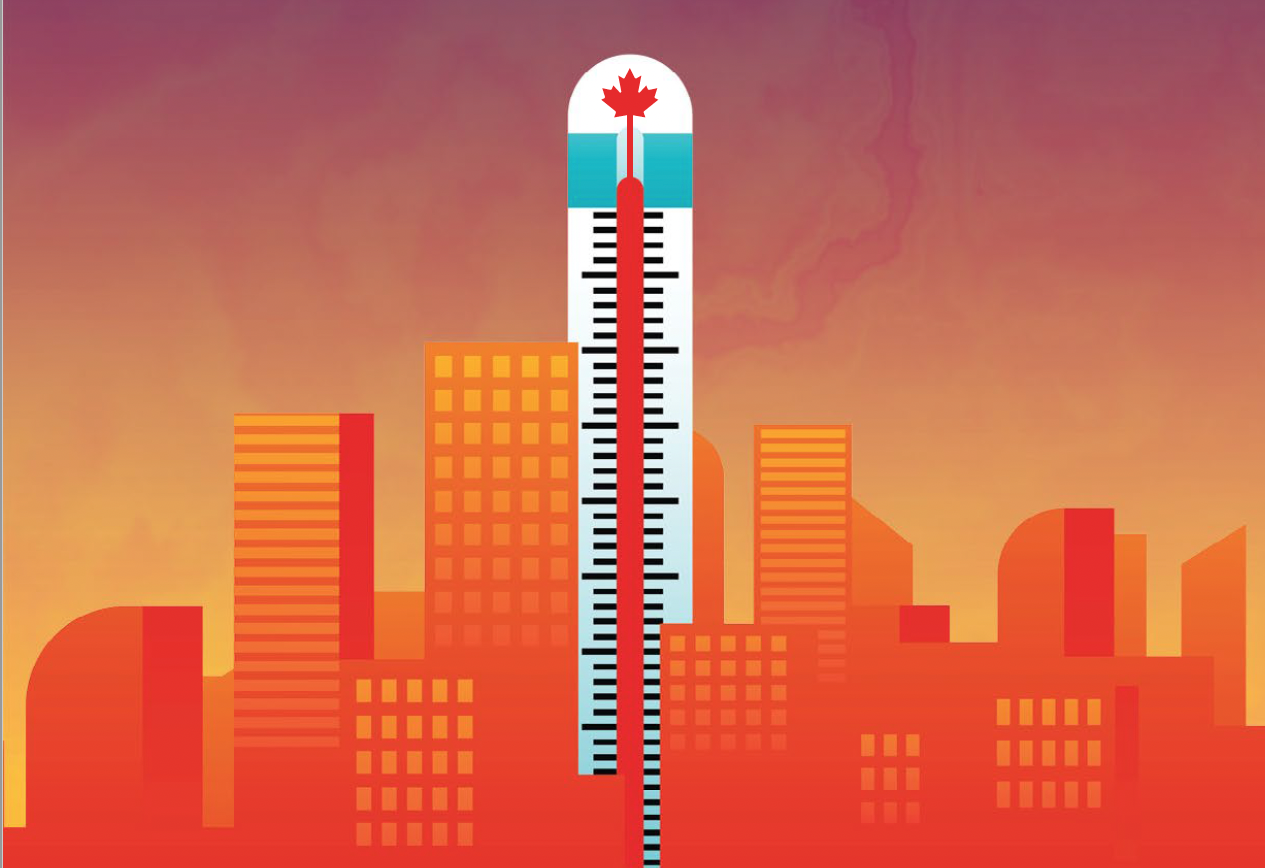
Heat-proofing community housing: Prioritizing extreme heat adaptation for vulnerable Canadians
An Action Canada Fellowship reportWhile Canada is better known for its cold climate, extreme heat is increasingly prevalent in many areas of the country, significantly impacting the suitability and livability of our housing. If greenhouse gas emissions continue to rise at the same pace, many Canadian cities will likely see at least four times as many days per year with greater than 30 degrees Celsius temperatures between 2051 to 2080 compared to today.
Here, we explore how policymakers can better protect community housing residents who are at a heightened risk for heat-related morbidity and mortality. There is little research on broader policy mechanisms to specifically protect tenants in community housing. We focus on urban areas, as they are generally most vulnerable to the impact of extreme heat events due to the urban heat island effect, which is an urban or metropolitan area that is significantly warmer than its surrounding rural areas due to human activities.
We have four key recommendations:
- Create co-ordinated heat responses plans to protect community housing tenants from extreme heat;
- Adjust government policy, code, funding and programs to protect community housing tenants;
- Leverage holistic land use and urban design practices to reduce the impact of urban heat islands on community housing in the mid- to long-term; and
- Generate more private investment to support the development of climate resilient community housing through replicating and scaling up proven approaches.
These recommendations would complement proposed government action under the National Adaptation Strategy (NAS) and support the federal government’s objectives of protecting human health and wellbeing through climate change adaptation. While our recommendations would benefit community housing tenants living in urban centres, they would also benefit Canadians as a whole.
This report is intended for climate change adaptation, public health, and community housing policymakers from all levels of government. To avoid preventable deaths as extreme heat worsens, we call on decision makers to take immediate action to improve the livability of community housing units and to enhance tenants’ quality of life.









